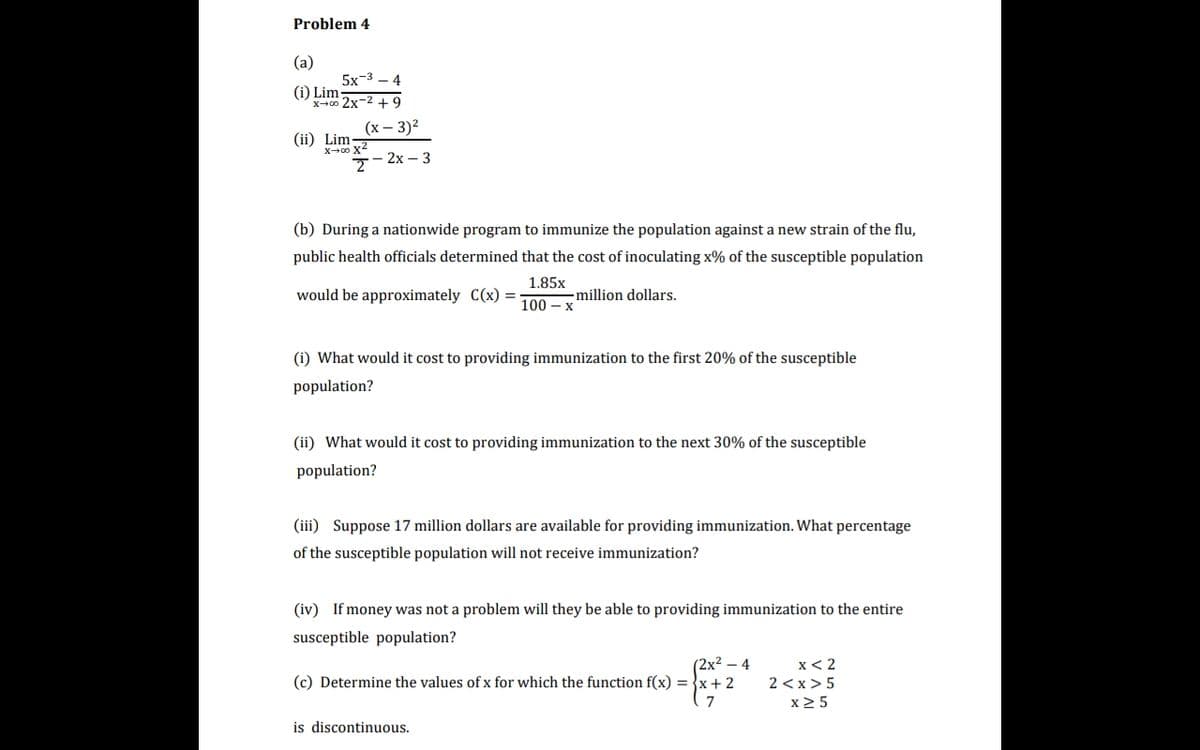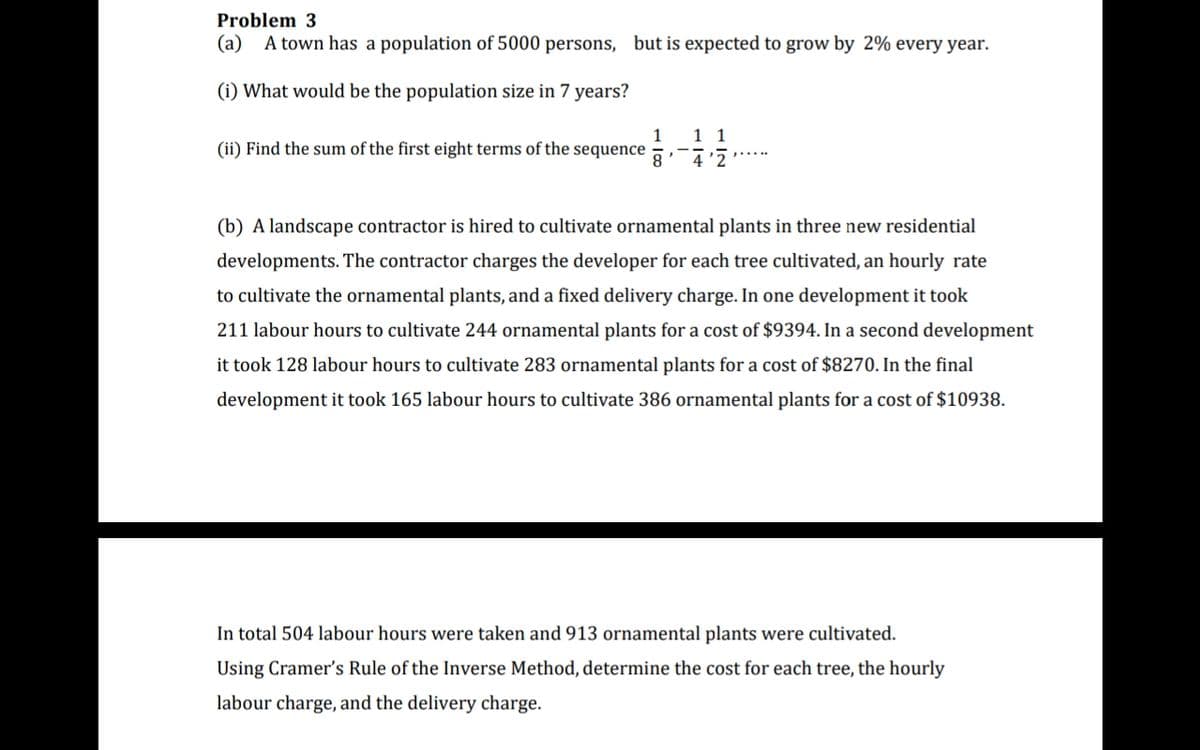Calculus: Early Transcendentals
8th Edition
ISBN:9781285741550
Author:James Stewart
Publisher:James Stewart
Chapter1: Functions And Models
Section: Chapter Questions
Problem 1RCC: (a) What is a function? What are its domain and range? (b) What is the graph of a function? (c) How...
Related questions
Question

Transcribed Image Text:Problem 4
(a)
5x-3 – 4
(i) Lim
x-00 2x-2 +9
(х— 3)2
(ii) Lim
X0 x2
2х — 3
(b) During a nationwide program to immunize the population against a new strain of the flu,
public health officials determined that the cost of inoculating x% of the susceptible population
1.85x
would be approximately C(x) =
million dollars.
100 – x
(i) What would it cost to providing immunization to the first 20% of the susceptible
population?
(ii) What would it cost to providing immunization to the next 30% of the susceptible
population?
(iii) Suppose 17 million dollars are available for providing immunization. What percentage
of the susceptible population will not receive immunization?
(iv) If money was not a problem will they be able to providing immunization to the entire
susceptible population?
(2х2 —4
(c) Determine the values of x for which the function f(x) = }x+2
. 7
x< 2
2 <x > 5
x2 5
is discontinuous.

Transcribed Image Text:Problem 3
(a) A town has a population of 5000 persons, but is expected to grow by 2% every year.
(i) What would be the population size in 7 years?
1
esequence
1 1
4'7
(ii) Find the sum of the first eight terms of the
(b) A landscape contractor is hired to cultivate ornamental plants in three new residential
developments. The contractor charges the developer for each tree cultivated, an hourly rate
to cultivate the ornamental plants, and a fixed delivery charge. In one development it took
211 labour hours to cultivate 244 ornamental plants for a cost of $9394. In a second development
it took 128 labour hours to cultivate 283 ornamental plants for a cost of $8270. In the final
development it took 165 labour hours to cultivate 386 ornamental plants for a cost of $10938.
In total 504 labour hours were taken and 913 ornamental plants were cultivated.
Using Cramer's Rule of the Inverse Method, determine the cost for each tree, the hourly
labour charge, and the delivery charge.
Expert Solution
This question has been solved!
Explore an expertly crafted, step-by-step solution for a thorough understanding of key concepts.
Step by step
Solved in 4 steps

Knowledge Booster
Learn more about
Need a deep-dive on the concept behind this application? Look no further. Learn more about this topic, calculus and related others by exploring similar questions and additional content below.Recommended textbooks for you

Calculus: Early Transcendentals
Calculus
ISBN:
9781285741550
Author:
James Stewart
Publisher:
Cengage Learning

Thomas' Calculus (14th Edition)
Calculus
ISBN:
9780134438986
Author:
Joel R. Hass, Christopher E. Heil, Maurice D. Weir
Publisher:
PEARSON

Calculus: Early Transcendentals (3rd Edition)
Calculus
ISBN:
9780134763644
Author:
William L. Briggs, Lyle Cochran, Bernard Gillett, Eric Schulz
Publisher:
PEARSON

Calculus: Early Transcendentals
Calculus
ISBN:
9781285741550
Author:
James Stewart
Publisher:
Cengage Learning

Thomas' Calculus (14th Edition)
Calculus
ISBN:
9780134438986
Author:
Joel R. Hass, Christopher E. Heil, Maurice D. Weir
Publisher:
PEARSON

Calculus: Early Transcendentals (3rd Edition)
Calculus
ISBN:
9780134763644
Author:
William L. Briggs, Lyle Cochran, Bernard Gillett, Eric Schulz
Publisher:
PEARSON

Calculus: Early Transcendentals
Calculus
ISBN:
9781319050740
Author:
Jon Rogawski, Colin Adams, Robert Franzosa
Publisher:
W. H. Freeman


Calculus: Early Transcendental Functions
Calculus
ISBN:
9781337552516
Author:
Ron Larson, Bruce H. Edwards
Publisher:
Cengage Learning